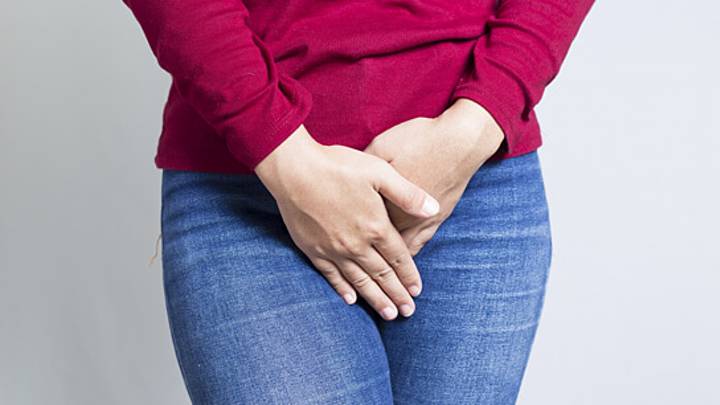What is Thrush?

The causes of thrush and yeast infections
Thrush is a common name for a yeast infection, which is also known as candidiasis. Vaginal thrush is a common infection in women caused by an overgrowth of Candida yeasts which can cause irritation and itching around the vulva and vaginal opening. It can also affect the penis.
Oral thrush is caused by the same group of yeasts as vaginal and penile thrush, but the infection is in your mouth.
What is thrush caused by?
Vaginal yeast infections occur mainly in women who have started having periods, and are rare in younger girls or women who have been through the menopause. Most of the time, there’s no underlying reason for the infection, although there are some factors that can increase your risk of getting vaginal thrush:
- using antibiotics
- using hormonal contraception (the combined and mini-pill and patches)
- contraceptive devices (sponges, diaphragms and intrauterine devices (IUDs))
- a weakened immune system due to HIV, chemotherapy and some other medicines
- pregnancy
- diabetes
- being sexually active (although thrush isn’t a sexually transmitted infection)
The same fungus causes oral thrush as vaginal thrush, which is normally found in your mouth and digestive system. If the fungus multiplies, it can lead to thrush. Babies, young children and elderly people are at a higher risk of oral thrush, and some of the factors that might increase their risk are:
- antibiotics
- using steroidal asthma inhalers
- wearing dentures (especially badly fitting dentures)
- poor oral hygiene
- a dry mouth, caused by medication or illness
- smoking
- chemotherapy or radiotherapy
- certain medical conditions like diabetes, iron or vitamin B12 deficiency, underactive thyroid and HIV
What are the symptoms of oral thrush?
Symptoms of oral thrush can include:
- white patches in your mouth that can sometimes be wiped off
- red areas that can bleed after the white patches are removed
- an unpleasant taste in your mouth
- loss of taste
- redness in your mouth and/or your throat
- cracks in the corners of your mouth
- a painful, burning sensation in your mouth
Sometimes oral thrush makes eating and drinking difficult too
What are the symptoms of vaginal thrush?
The most common symptoms of a vaginal thrush infection include:
- irritation and itchiness around your vulva and vaginal opening
- soreness and irritation around the vulva, especially when passing urine
- painful sex
- swelling and redness around your vaginal opening and vulva
- you might also experience some discharge, which could be watery or thick and curd-like. Some women have no discharge at all.
Vaginal thrush symptoms can be similar to other conditions, so if this is the first time you’ve had them, it’s advisable to speak to your doctor before self-diagnosing and/or self-treatment. Other conditions that are similar include:
- bacterial vaginosis
- trichomoniasis (which is a sexually transmitted infection)
- dermatitis
What is the treatment for oral thrush?
Oral thrush often clears up by itself in babies, and you can prevent it coming back by sterilising feeding equipment and toys your baby likes to put in his or her mouth. Some people also suggest that giving a baby sterilised water straight after a milk feed reduces the candida population in the mouth by washing away milk residue.
If there’s an underlying reason for oral thrush, that will need to be resolved (if possible) before treatment. So if ill-fitting dentures are a likely cause, better fitting ones will be suggested. Diabetic patients might need to look into a different treatment to help manage their condition better.
The usual treatment is with antifungal pastilles or liquid suspensions that you keep in your mouth for a while and then swallow.
What is the treatment for vaginal thrush?
Vaginal yeast infections can be treated orally or vaginally. You can opt for a vaginal cream and/or a pessary. The pessary is a type of tablet you insert into your vagina using an applicator, and the cream is applied externally two to three times a day. You can buy over-the-counter treatments or get them from your doctor. Thrush treatments are available for different durations, depending on how severe your infection is.
If you prefer, you can take a one-dose tablet. Available over the counter or from your doctor, the pill contains an antifungal medicine called fluconazole. Fluconazole has a few mild side effects (commonly stomach upset, headache and rashes). It’s known to interact with some other medicines, so ask a doctor or pharmacist before using it.
Oral fluconazole isn’t recommended if you’re pregnant or think you could be pregnant.
Is there a difference between thrush and a yeast infection?
Thrush is just another name for a yeast infection caused by an overgrowth of a Candida type fungi (often Candida Albicans).
What is Candida?
Candida is the name of the fungus that commonly causes yeast infections. It usually lives in your digestive tract and vagina without causing any problems. Sometimes, if the normal levels of good bacteria and other normal fungi are upset by factors such as medication, illness, injury, or stress to your immune system, the Candida can multiply and cause thrush symptoms.






